For those people lucky enough to live close to bogs and/or hills – if you fancy making your own skep, purple moor grass (Molinia caerulea) is ready to gather from October onwards. Weather depending.
Strange name though: Purple Moor Grass- until you see a swathe of it on a summers day with a strong wind blowing across it, then there is a purple sheen to the green. It is a grass suitable for skepmaking because of the length of its leaves and because of its toughness. Another excellent quality is that it withdraws nutrients from leaves and stems at the end of summer then obligingly sheds the foliage for the winter.
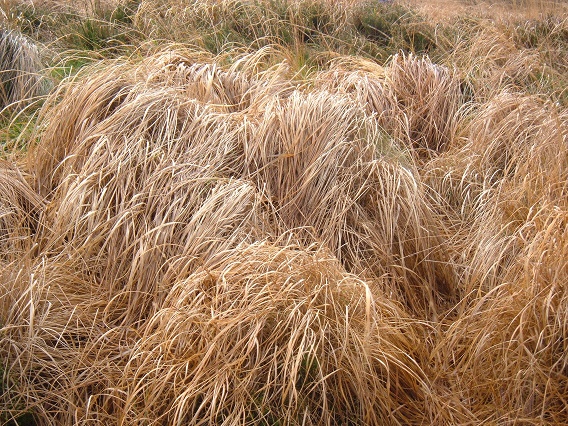
Both the leaves and the tall flowering stems will make a good skep.
Leaves
The leaves (above) are easier to work and make a softer skep but surprisingly strong so long as you get the rope nice and tight. Strong enough to bear my weight! Somebody told me once, “If you can’t stand on it, it ain’t a skep”, so I test them all now.
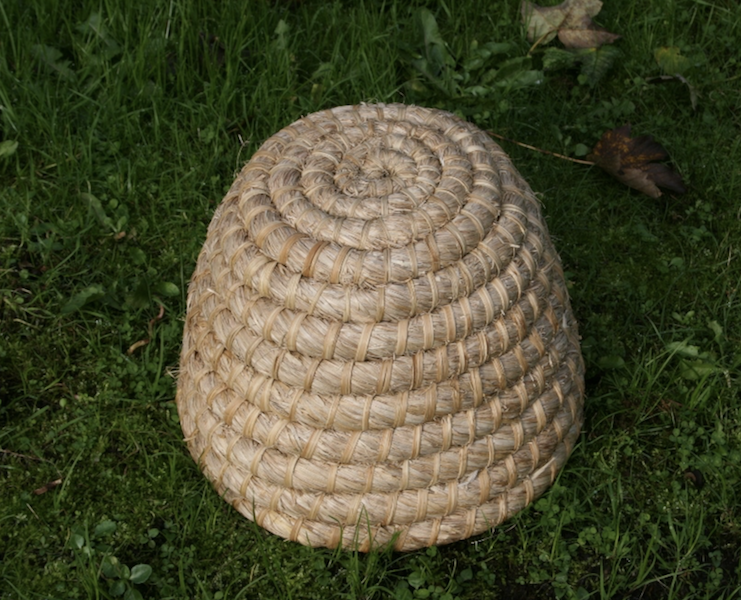
Flowering stems
The stems can be very tough and brittle whether you soak them or not and will not bend sufficient for the tight circuits demanded at the start. There are two solutions to that – either cut them at the end of summer when they are still green at the base or use the leaves to start with then start to feed the stems in later. When using these you will need to either strip the seed-heads or snip them off beforehand.
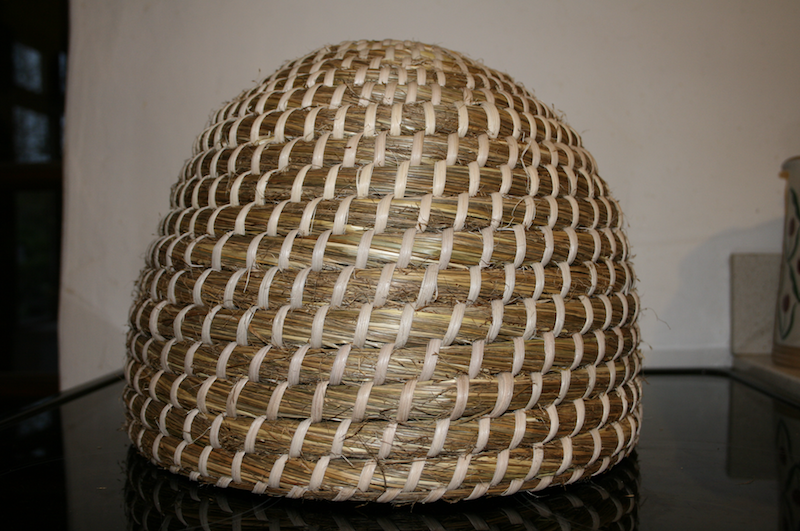
Be a bit careful with these as the seeds can become parasitised by a fungus from the same family that causes ‘ergot of rye’ on rye, Claviceps microcephala. Read on…
Ergots
If C. microcephala is present, you’ll see some of the seeds will be enlarged, hard and grey – these are ergots. A bit like wild rice or mouse droppings. Don’t eat them – they can cause miscarriage, hallucinations and death.
Here’s an ergot on Molinia – that black thing in the middle – click the photo below for a closer look:
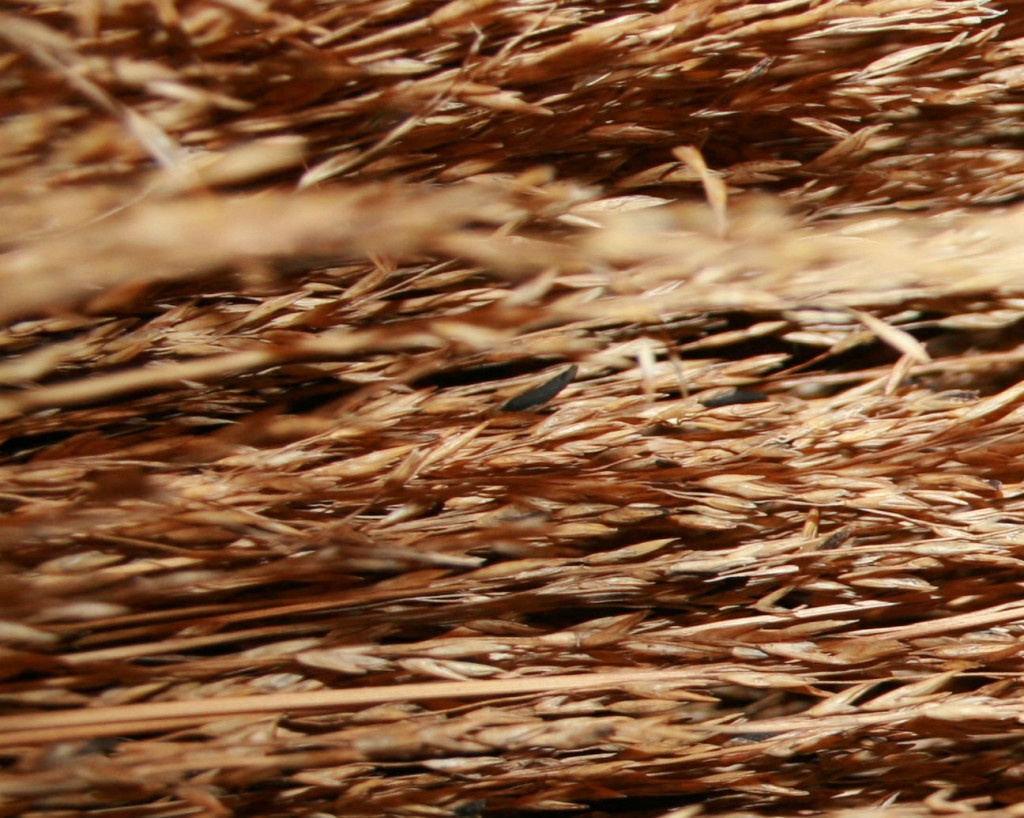
Harvesting
When the long flowering stems are half bleached and still a little green at the base is a good time to cut them as they are quite dry but still pliant so go forth and get cutting.
If you prefer to use the leaves for your skep making, wait till they’re bleached but a bit green at the base. Wind them around your hand and give them a good pull – if they come away they’re ready, if not – give them a bit longer.
Later in the year the leaves start to moult on their own but they can get very wet. Also the deer can trample the tussocks badly so don’t leave it too late into the winter.
Click here for 2019 Skep Course
Click here for skep making instructions
Click here for Skep Beekeeping
Copyright © Beespoke.info, 2014. All Rights Reserved.
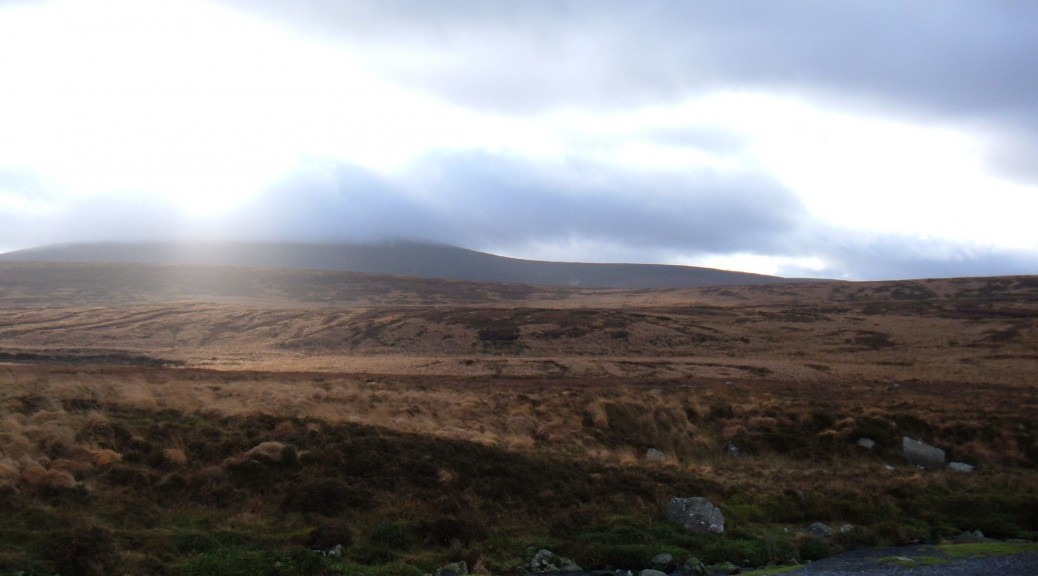
I am planning to make a Skep.I just need to know,what is the best place and time to harvest(Northumberland). Thankyou.
Regards,
Daniel.
I’m assuming you want to use purple moor grass for your skep.
If you are planning to use the tall flowering stems, it’s best to cut them as they are turning colour but while still a bit green at the bottom – September/Octoberish? Keep an eye on it. If you let it get completely dry it will be brittle and difficult to work.
If you are planning to use the leaves, wait till they have turned blonde – probably October but just keep an eye on it. Pull it on a dry day.
The leaves will make a softer skep and are easier to work. The stems make a stronger, tighter skep but are a bit of a challenge especially on the smaller circuits at the start.